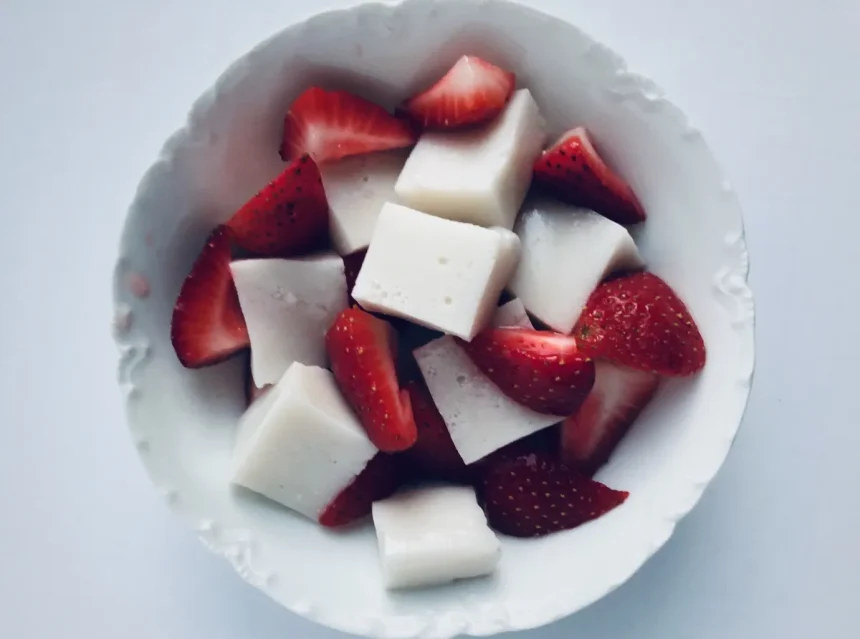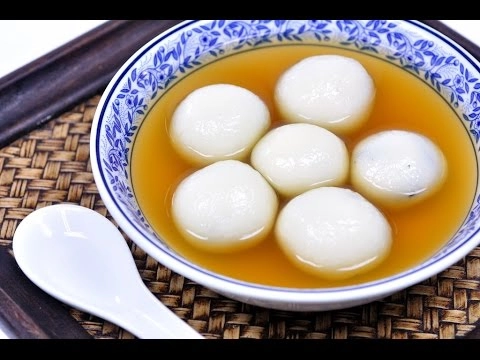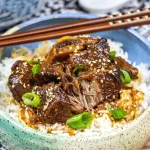Understanding Chinese Jellies A Cultural and Culinary Overview
Chinese jellies have been a popular part of Asian desserts for centuries, cherished for their refreshing texture and light flavors. Traditionally enjoyed as cooling treats, they hold a special place in Chinese culture, especially during hot summer months or after heavy meals. These jellies reflect both ancient culinary traditions and local ingredients, making them a unique experience.
History and Cultural Significance
Jelly desserts in China go back hundreds of years, often linked to medicinal beliefs in balancing the body’s heat. For example, grass jelly is prized not only for its taste but also for its cooling properties in traditional Chinese medicine. Many of these jellies were originally made to support health while offering a simple, natural sweetness.
Types of Chinese Jellies
There are several well-known types of Chinese jellies, each with distinct ingredients and textures:
- Grass jelly (Suong Sao Thach Den): A dark, bittersweet jelly made from the mesona plant.
- Coconut jelly (Yezhi Gao): A smooth, white jelly rich with coconut flavor.
- Almond jelly (Annin Tofu): A soft set jelly with a sweet almond taste.
- Mung bean jelly: Clear or lightly tinted jelly, with a mild and slightly nutty flavor.
- Fruit jelly (Guo Dong): Made with fresh or dried fruits along with agar or gelatin.
Common Ingredients and Substitutes
Common gelling agents like agar agar or gelatin form the base of most Chinese jelly recipes. Agar agar is especially popular as it’s plant-based and perfect for vegan jelly recipes. Besides the gelling agents, traditional ingredients like mung beans, grass jelly leaves, coconut milk, and almonds are staples. For those who can’t find these traditional elements, substitutes like flavored gelatin mixes or other plant-based thickeners work just fine to create similar textures and flavors.
This blend of history, culture, and versatility makes Chinese jellies an exciting treat to explore in any kitchen.
5 Authentic Chinese Jelly Recipes to Try at Home
If you’re curious about making Chinese jellies at home, here are five popular recipes that bring authentic flavors and textures straight to your kitchen.
Grass Jelly Suong Sao Thach Den
Grass jelly is a classic cooling Chinese dessert, made from the leaves of the mesona plant. It has a mild, slightly bitter taste and a smooth texture. Often served chilled, grass jelly is perfect on its own or paired with sweet syrup, fruits, or bubble tea toppings for a refreshing treat.
Coconut Jelly Yezhi Gao
Coconut jelly, or Yezhi Gao, is a light and creamy dessert made from coconut milk and agar agar. It’s mildly sweet and has a delicate coconut flavor, making it a favorite in Chinese and other Asian dessert menus. You can serve it plain or with tropical fruit for added texture.
Almond Jelly Annin Tofu
Almond jelly, known as Annin Tofu, is a soft, fragrant jelly made from apricot kernel milk or almond extract combined with milk or cream. It has a subtle almond taste and a silky texture popular at dim sum spots. Serve it chilled with fruit cocktail or syrup for a smooth finish.
Mung Bean Jelly
Mung bean jelly is made from mung bean starch, yielding a translucent jelly with a light, neutral flavor—great for soaking up sweet syrups or mixing with fresh fruit. It’s a versatile recipe often found in Chinese summer desserts, appreciated for its cooling quality.
Fruit Jelly Guo Dong
Fruit jelly Guo Dong involves setting a fruity gelatin dessert with fresh fruit bits suspended inside. Using agar agar or gelatin, this jelly captures the bright flavors of seasonal fruits, offering a chewy but tender bite. It’s colorful and fun for a homemade dessert.
Each recipe highlights different ingredients and textures, offering a broad look into Chinese jelly desserts you can easily make and enjoy at home. For more unique jelly ideas, check out easy agar agar recipes or explore vegan jelly recipes to keep things light and fresh.
Tips for Perfect Chinese Jellies
Making Chinese jellies isn’t hard, but a few tips can help you get the texture and flavor just right.
Choosing the Right Gelling Agent
- Agar agar is popular in Chinese jelly recipes. It’s plant-based, sets firmly, and works well for vegan jelly recipes.
- Gelatin can be used if you want a softer, melt-in-your-mouth texture, but it’s not vegan and has a different consistency.
- For some jellies like grass jelly or mung bean jelly, natural thickeners or starches are used instead of agar or gelatin.
Adjusting Sweetness and Texture
- Start with less sugar and add more after tasting, especially if you plan to combine the jelly with sweet toppings or fruit.
- For creamier jellies like almond jelly (annin tofu), use milk or coconut milk to adjust creaminess.
- If you want a firmer jelly for cutting into shapes, use a bit more agar agar or less liquid. For softer jelly, cut back on the gelling agent slightly.
Storage and Serving Ideas
- Store jellies in an airtight container in the fridge to keep them fresh for up to 5 days.
- Serve chilled for the best texture and refreshing taste—perfect for hot summers or as a cooling Chinese dessert.
- Jellies pair well with syrup, fresh fruit, or bubble tea toppings to add flavor and fun textures.
- When cutting jelly, use a sharp knife dipped in warm water to get clean slices without sticking.
These simple tips help get authentic texture and flavor in your Chinese fruit jelly, grass jelly, almond jelly dim sum style, or any of your favorite recipes.
Where to Find Ingredients for Chinese Jelly Recipes Local and Online Sources Budget Friendly Options
Finding ingredients for Chinese jelly recipes like grass jelly, almond jelly, or coconut jelly is easier than you might think, especially if you live in the U.S. Here’s where to look:
Local Asian Grocery Stores
- Most Asian supermarkets carry key ingredients such as grass jelly powder, agar agar, mung beans, and canned coconut milk.
- These stores often have fresh or frozen versions of ingredients like fruit for Chinese fruit jelly too.
- You can find almond jelly mix or annin tofu powder in the dessert or baking aisle.
Online-Händler
- Websites like Amazon, Weee!, and Thrive Market offer a wide range of Asian dessert ingredients, including vegan-friendly agar agar powder and specialty jellies.
- Buying online is perfect if you don’t have easy access to local Asian markets or want bulk options.
Budget Friendly Tips
- Agar agar is a great affordable gelling agent substitute for gelatin and lasts a long time when stored properly.
- Buying dried mung beans or grass jelly in powder form is cheaper than ready-made jelly from stores.
- Look for store brands or bulk packaging to save money without sacrificing quality.
- Comparing prices between local markets and online sources can help stretch your budget further.
Having the right ingredients on hand makes a huge difference when you’re making authentic Chinese jelly desserts at home. Whether you shop locally or online, you can whip up refreshing, cooling Asian desserts that are both delicious and wallet-friendly.
Health Benefits and Dietary Considerations
Chinese jelly desserts are not only tasty but often come with some health perks. Many traditional Chinese jellies use natural ingredients like grass jelly, mung beans, and almond milk, which add nutritional value and provide benefits rooted in Chinese medicine.
Nutritional Profile
- Low in calories: Most Chinese jellies are light and low-calorie, making them a great dessert option if you’re watching your weight.
- Rich in fiber: Ingredients like grass jelly and mung bean jelly often contain fiber, which helps with digestion.
- Plant-based: Many recipes rely on agar agar or natural starches rather than gelatin, making them vegan-friendly.
- Vitamins and minerals: Nuts and beans used in almond jelly and mung bean jelly add a bit of protein, vitamins, and minerals.
Cooling Properties in Chinese Medicine
Chinese jellies are valued for their cooling effects on the body, which is important in traditional Chinese medicine (TCM). Ingredients like grass jelly and mung bean help reduce internal heat, soothe irritation, and balance the body, especially during hot summer months.
Adapting for Dietary Needs
- Vegan and vegetarian diets: Use agar agar or plant-based gelling agents to keep your jelly vegan.
- Gluten-free: These jellies are naturally gluten-free if you avoid adding any gluten-containing toppings.
- Sugar control: Adjust the sweetness by reducing sugar or using natural sweeteners like stevia or honey to keep it healthy.
- Allergies: For those with nut allergies, skip almond jelly or replace almond milk with coconut milk or soy milk for allergen-friendly options.
By keeping these health benefits and adjustments in mind, you can enjoy authentic Chinese jelly desserts while meeting your dietary preferences and needs. For more creative vegan dessert ideas, feel free to check out raw vegan recipes.








